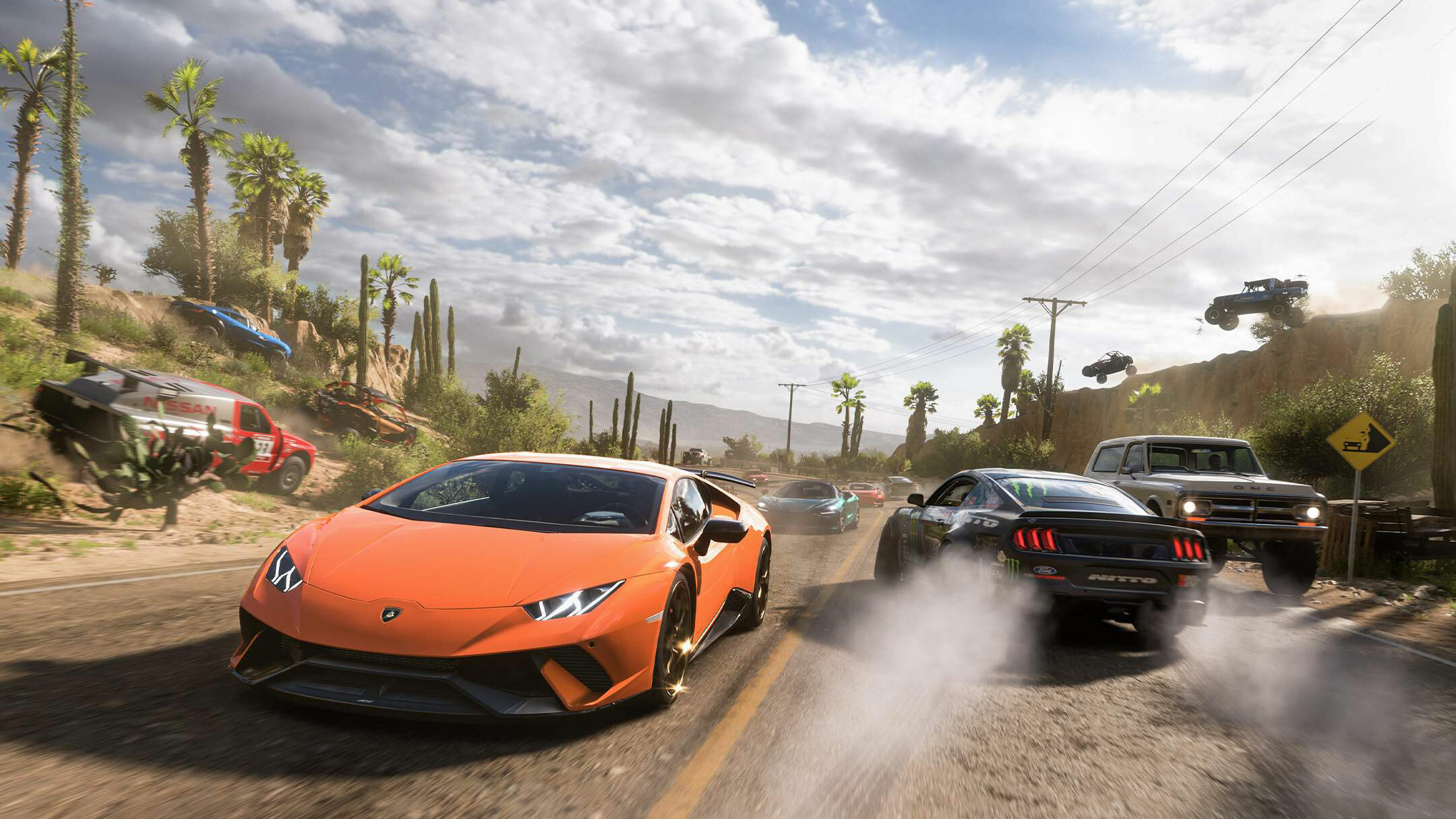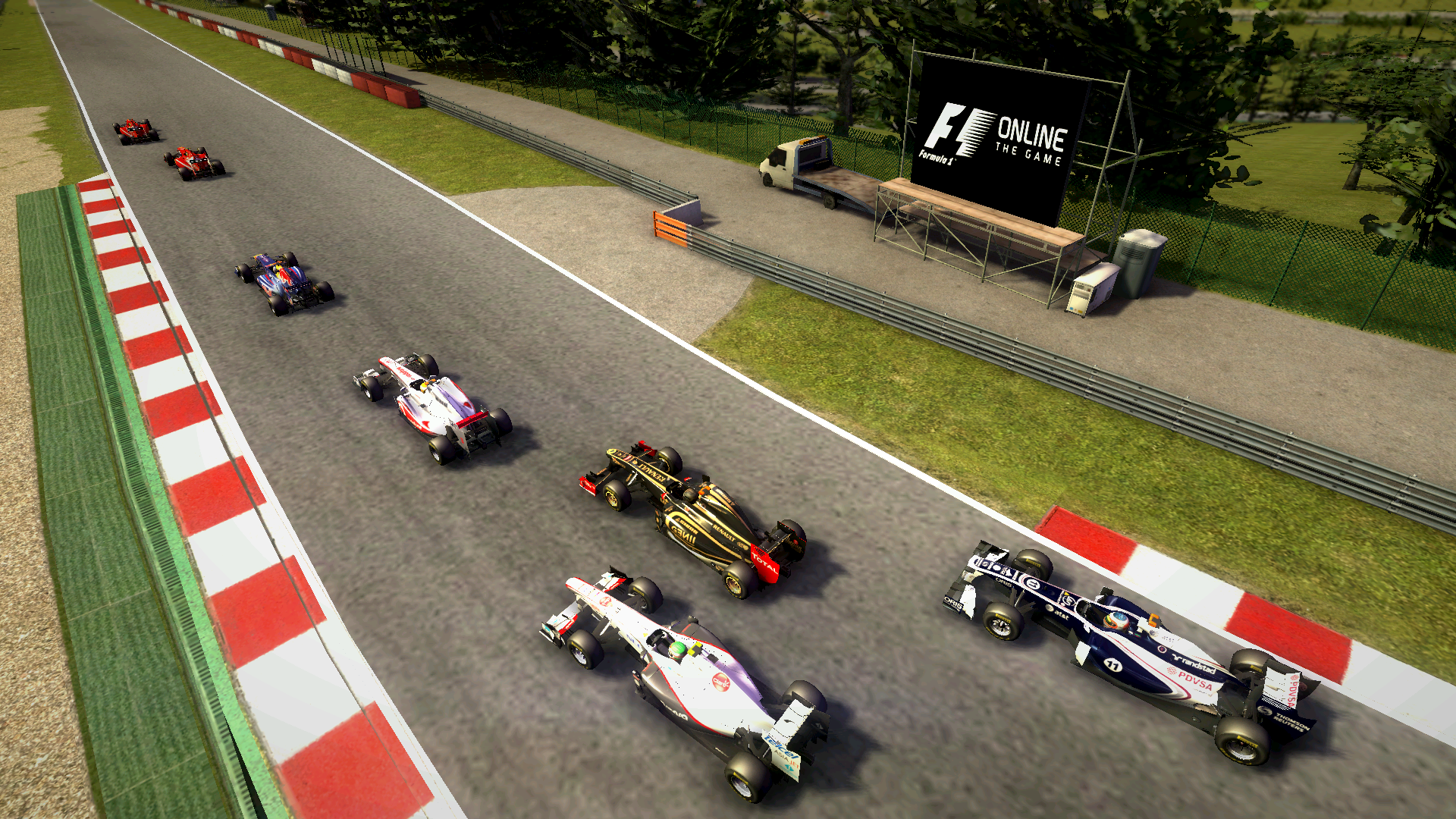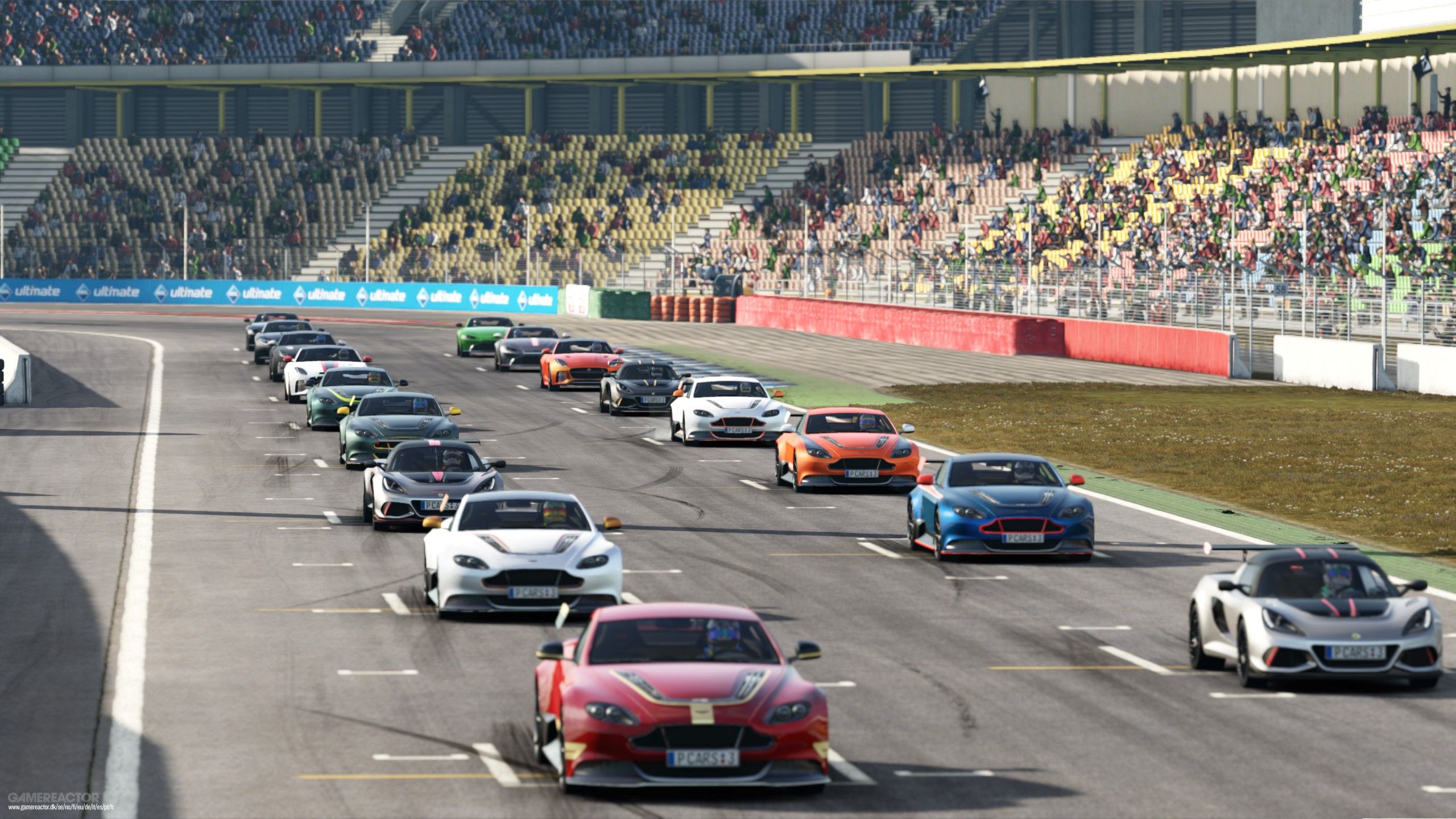The Evolution Of Driving Simulations In Gaming
Driving simulations have become a cornerstone in the world of gaming, offering an immersive experience that blurs the lines between virtual and reality. Evolution of driving simulations in gaminghas been nothing short of revolutionary. From the pixelated, two-dimensional racers of the early arcade era to the hyper-realistic, physics-driven simulations we see today, the journey has been marked by constant innovation and technological advancements.
For car users, tech enthusiasts, and gamers alike, driving simulations serve multiple purposes. They are not just a form of entertainment but also a tool for improving driving skills, understanding vehicle dynamics, and experiencing the thrill of racing without the risks associated with real-world driving. The importance for car users lies in the ability to familiarize themselves with different vehicle types and driving conditions.
Tech enthusiasts revel in the ever-evolving software and hardware that push the boundaries of what's possible in a virtual environment. Meanwhile, gamers seek the adrenaline rushand the challenge of competing against others, honing their reflexes and strategic thinking in the process.
The appeal of driving simulations is universal, transcending age, background, and even actual driving experience. They offer a safe and controlled environment to explore and enjoy the act of driving, which is why they continue to captivate a broad audience worldwide.
Cutting-Edge Technologies In Modern Driving Simulators
Driving simulators have come a long way from their humble beginnings. Today, they are powered by cutting-edge technologies that offer gamers an unparalleled experience. These advancements are not just about the thrill; they also play a crucial role in improving driving skills and understanding vehicle dynamics. Let's dive into the technologies that are pushing the boundaries of what's possible in modern driving simulators.
Advanced Graphics And Real-Time 3D Development
The visual aspect of driving simulators has seen a massive transformation. Advanced graphicsengines are capable of rendering hyper-realistic environments, making it difficult to distinguish between the game and reality. These graphics are powered by:
- High-resolution textures: which provide detailed road surfaces, landscapes, and car models.
- Dynamic lighting: that reflects real-world conditions, such as the glaring sun or the soft glow of streetlights at dusk.
- Weather systems: that simulate rain, fog, snow, and other conditions affecting visibility and road grip.
The use of real-time 3D development tools, like Unreal Engine and Unity, has enabled developers to create immersive worlds with physics that mirror the real world. This means that everything from the car's response to the environment to how it handles on different surfaces is as true to life as possible.
Haptic Feedback And Full-Body Suits
Haptic feedback technology has revolutionized the tactile experience in driving simulators. Steering wheels and pedals now provide force feedback that mimics the resistance and vibrations you would feel in a real car. This feedback helps gamers understand the limits of the car's grip and the nuances of its handling.
Taking it a step further, full-body suits equipped with sensors can simulate the sensation of G-forces, acceleration, and even the impact of collisions. These suits enhance the physical experience of driving, making it more immersive and informative for the user.
Mixed Reality And Virtual Reality Integration
Mixed Reality(MR) and Virtual Reality (VR) have opened new doors for driving simulation technology. VR headsets transport gamers directly into the cockpit, offering a 360-degree view of the virtual world. This level of immersion is unparalleled, as it allows gamers to experience the thrill of racing as if they were actually behind the wheel.
MR, on the other hand, blends the real and virtual worlds, allowing gamers to interact with physical objects, like a steering wheel or gear shift, while viewing a digital overlay of the racing environment. This integration creates a seamless experience that enhances both training and gameplay.
Real-World Physics And Telemetry
The incorporation of real-world physics into driving simulators ensures that the vehicles behave as they would in real life. This includes accurate representations of tire grip, suspension dynamics, aerodynamics, and engine performance. Gamers can feel the difference between front-wheel drive, rear-wheel drive, and all-wheel drive systems, along with the subtleties of different car models and setups.
Telemetry plays a vital role in this realism. It involves the collection and analysis of data from the car's performance during the simulation. Gamers can use this data to fine-tune their driving techniques and vehicle settings, much like professional racing teams do in the real world.
The technologies behind modern driving simulators are not just about entertainment. They are essential tools for car users, tech enthusiasts, and gamers who seek to understand vehicle dynamics and improve their driving skills. As these technologies continue to evolve, the line between simulation and reality becomes increasingly blurred, offering an ever-more authentic and exhilarating driving experience.
The Role Of Driving Simulators In Car Development And Safety
Driving simulators are not just for entertainment; they play a crucial role in the development and safety of real-world vehicles. By providing a controlled and risk-free environment, simulators allow car manufacturers and researchers to rigorously test and refine various aspects of vehicle design and driver assistance systems.
Testing And Development Of Safety Features
Car manufacturers are increasingly turning to driving simulators to test the safety features of their vehicles. These simulators can replicate a wide range of driving conditions and scenarios that would be difficult or dangerous to recreate on the road. For instance, they can simulate adverse weather conditions, like heavy rain or fog, and emergency situations, such as a sudden stop by the car in front or a pedestrian stepping onto the road.
Key Benefits Of Using Simulators For Safety Testing Include:
- Risk-free environment:No actual danger to drivers or vehicles.
- Controlled conditions:Consistent scenarios for reliable data.
- Cost-effectiveness:Reduces the need for multiple physical prototypes.
Simulation Of Traffic Scenarios And Driver Assistance Systems
Driving simulatorsare invaluable for testing and improving driver assistance systems, which are designed to increase car safety and support drivers. These systems include features like adaptive cruise control, lane-keeping assistance, and emergency braking. Simulators can create complex traffic scenarios to test these systems, ensuring they respond correctly in real-world situations.
Examples Of Driver Assistance Systems Tested In Simulators
- Adaptive Cruise Control (ACC):Maintains a safe distance from the car ahead.
- Lane Keeping Assist (LKA):Helps keep the vehicle within its lane.
- Automatic Emergency Braking (AEB):Detects potential collisions and applies brakes if necessary.
Impact On Autonomous Driving Technology Research
Autonomous driving technology is perhaps the most significant area where driving simulators have an impact. The development of self-driving cars requires millions of miles of testing to ensure safety and reliability. Simulators allow researchers to test autonomous systems in a multitude of scenarios, including rare but potentially dangerous situations that are almost impossible to encounter or recreate on public roads.
Advantages Of Simulators In Autonomous Driving Research
- Accelerated learning:AI-driven cars can learn from simulated experiences.
- Scenario replication:Rare events can be tested repeatedly for robustness.
- Human interaction:Simulators can include virtual pedestrians and drivers to test AI responses.
Driving simulators have become an essential tool in the automotive industry, not only enhancing the gaming experience for enthusiasts but also contributing significantly to the development of safer, more advanced vehicles. As technology continues to evolve, the line between simulation and reality blurs, leading to groundbreaking advancements in both car safety and the overall driving experience.
The Gaming Experience - Immersion And Realism
The quest for immersionand realismin driving simulations is not just about the thrill; it's about the intricate dance between man and machine, where every turn of the wheel and press of the pedal is a testament to the authenticity of the experience. For gamers, car users, and tech enthusiasts alike, the pursuit of a lifelike driving experience is relentless.
The Importance Of Realistic Driving Mechanics
Realistic driving mechanics are the cornerstone of any driving simulation game. They determine how closely the game mimics the handling and behavior of real-world vehicles. This includes aspects such as:
- Tire gripand traction: How the car adheres to the road surface.
- Weight transfer: The shifting of the car's weight during acceleration, braking, and cornering.
- Suspension dynamics: How the car's suspension reacts to the road and driving conditions.
- Aerodynamics: The impact of air resistance and downforce on the car's performance.
These elements are crucial for simulating the nuanced responses of a car to a driver's inputs and the environment. When done right, they can teach valuable skills that are transferable to actual driving.
Hardware Requirements For Optimal Experience
To achieve the highest level of immersion, certain hardware requirements must be met. Here's a list of essential equipment for an optimal driving simulation experience:
- High-performance PC or console: To handle the demanding graphics and processing needs.
- High-resolution monitor or VR headset: For clear and detailed visuals.
- Force feedback steering wheel and pedals: To simulate the tactile sensations of driving.
- Racing seat or cockpit: For a comfortable and realistic driving position.
Investing in quality hardware can significantly enhance the gaming experience, making it more engaging and enjoyable.
The Rise Of Online Multiplayer And Esports In Sim Racing
Online multiplayer has revolutionized the way gamers experience driving simulations. It allows them to compete against others from around the world, adding a new level of challenge and excitement. The competitive nature of sim racing has given rise to esports, where players can showcase their racing skills in organized tournaments. Some key points include:
- Global competition: Players can race against the best from different countries.
- Community and social interaction: Online platforms facilitate interaction with fellow enthusiasts.
- Professional opportunities: Talented sim racers can pursue careers in esports.
The integration of online multiplayer and the growth of esports have not only expanded the community of sim racers but have also elevated the genre to new heights of professionalism and recognition.
Driving simulations have come a long way, evolving from simple arcade games to sophisticated platforms that offer unparalleled realism and immersion. As technology continues to advance, the line between simulation and reality blurs, providing gamers, car users, and tech enthusiasts with experiences that are as instructive as they are entertaining. The future of driving simulations promises even more exciting developments, ensuring that the virtual roads we travel will be as rich and engaging as the real ones.
Future Trends And Innovations In Driving Simulation Technology
The world of driving simulations is on the cusp of a technological revolution, with new advancements poised to redefine the boundaries between virtual and real-world driving. As we look to the future, several key trends and innovations are emerging that promise to enhance both training and entertainment experiences for car users, tech enthusiasts, and gamers alike.
Potential Developments In Simulation Software And Hardware
- Simulation Software Enhancements:The software that powers driving simulations is set to become even more sophisticated. Developers are working on algorithms that can replicate real-world scenarios with greater accuracy, including unpredictable weather conditions and dynamic traffic patterns. Artificial intelligence (AI) is also expected to play a significant role, with AI-driven non-player characters (NPCs) behaving more like human drivers, providing a more realistic and challenging environment for gamers.
- Hardware Innovations:On the hardware front, expect to see more compact and affordable motion rigs that can fit into a typical gamer's room. These rigs will likely incorporate advanced motion-cueing systems that can simulate g-forces and the sensation of motion more accurately. Steering wheels and pedals will become more responsive, with improved force feedback that mimics the feel of a real car's controls to an unprecedented degree.
The Convergence Of Simulation Technology And Real-World Driving
The line between simulation and actual driving is set to blur further. With the integration of real-world data into simulation environments, drivers will be able to practice on virtual replicas of existing race tracks and roads. This not only enhances the gaming experience but also serves as a valuable tool for real-world drivers to familiarise themselves with new routes or racing circuits before ever setting foot in a car.
Moreover, as autonomous vehicle technology advances, simulations will become an integral part of the development process. Simulators will be used to train AI systems, exposing them to a vast array of driving conditions and scenarios, which will be crucial in teaching these systems how to react in the real world.
Enhancing Training And Entertainment Through Simulation Advancements
- Professional Training -Driving simulations are not just for entertainment; they are also powerful training tools. With the advancements in technology, professional drivers can use simulators to hone their skills without the risks associated with real-world driving. The data collected from these sessions can be analysed to improve performance, technique, and safety.
- Entertainment Value -For gamers, the entertainment aspect of driving simulations will reach new heights. We can anticipate more interactive storylines, where a player's decisions can influence the game's outcome, much like a choose-your-own-adventure book. The social aspect of gaming will also benefit from these advancements, with better connectivity and more immersive multiplayer experiences that could rival the thrill of actual racing events.
- Accessibility -Another significant trend is the push towards making driving simulations more accessible to a broader audience. This includes developing software and hardware that can accommodate different skill levels and physical abilities, ensuring that everyone can enjoy the thrill of virtual racing.
Driving Simulations In Gaming - FAQs
What Is Driving Simulator Games?
A driving simulator game is a type of video game that aims to replicate the experience of driving a vehicle. These games use realistic graphics, physics, and controls to simulate the feeling of driving various types of vehicles, from cars and trucks to motorcycles and more. Driving simulators can vary in realism, ranging from arcade-style games to highly realistic simulations used for training and professional purposes.
Is There A Video Game That Teaches Driving?
There are video games designed specifically to teach driving skills. Some of these games focus on realistic driving physics and traffic rules, providing a virtual environment where players can practice and improve their driving abilities. While these games may not replace real-world driver's education, they can complement traditional training methods and offer a safe space for learners to practice maneuvers, decision-making, and understanding traffic scenarios.
What Is The Best Driving Simulator?
The "best" driving simulator can vary based on individual preferences and needs. Some popular and highly regarded driving simulators include:
- iRacing:Known for its realistic physics and competitive online racing.
- Assetto Corsa:Praised for its realistic driving experience and extensive car and track selection.
- Project CARS:Offers a diverse range of cars and tracks with a focus on realism.
- Microsoft Flight Simulator (2020):While primarily a flight simulator, it has expanded to include realistic ground vehicles and driving experiences.
The choice of the best driving simulator depends on whether you're looking for a realistic racing experience, a more casual driving game, or something in between. Consider factors like graphics, physics, available cars and tracks, and multiplayer features when choosing the right simulator for your preferences.
Conclusion
The advancements in this field will not only provide gamers with an immersive experience but also contribute to the broader automotive industry, particularly in the areas of safety and autonomous vehicle development. The future of driving simulations is bright, and it's an exciting time for anyone with a passion for cars, technology, and gaming.




